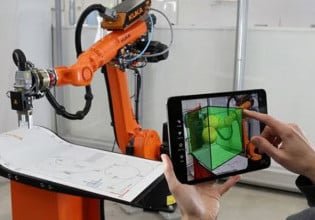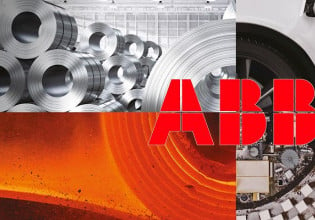Challenges to Sustainability: What Can Manufacturers Do to Go Green?
Setting sustainability goals is an important step, but there are a number of real challenges that lie in implementing initiatives that can deliver these targets and lead to long-term program success.
The world's top industrial organizations are taking bold steps towards a greener future. According to a recent study by Schneider Electric and Omdia, over half (57%) of leading companies have set carbon-neutral targets to offset their greenhouse gas (GHG) emissions. But it doesn't stop there—47% have also made RE100 pledges to draw their energy from renewable sources, and 36% have established science-backed targets to help limit global warming to 1.5-2 °C.
While setting sustainability goals is undoubtedly an essential first step, the real challenge lies in implementing initiatives that can deliver these targets. The research indicates that many industrial companies face significant obstacles when deploying and successfully executing their environmental sustainability projects. These barriers range from infrastructure limitations to cultural issues. That said, it's crucial to explore these roadblocks and determine ways that organizations can overcome them to protect our planet.
Old Assets and Systems
Almost a third (29%) of manufacturing leaders say that their organization’s legacy assets and infrastructure present a major challenge. This is unsurprising—after all, many buildings, power supplies, and processes predate the latest technology and climate science.

Figure 1. Aging assets can be a challenge to sustainability. Image used courtesy of Adobe Stock
Industrial companies often measure infrastructure replacement rates in decades, and the process is expensive and disruptive. But while installed systems may not be well suited to sustainability initiatives and can be strategically upgraded, ripping and replacing them with new infrastructure will likely cost more, be operationally implausible, and leave an even greater carbon footprint in the process.
Here, organizations can ‘digitally retrofit’ their operations to maximize efficiency while minimizing impact. One way of doing this is by implementing intelligent energy management systems (EMS) to monitor and manage energy use. The software offers insights into real-time energy performance while tracking variables like weather reports and building and site occupancy to automatically regulate the required levels of consumption, ensuring organizations only ever use the energy they truly need.
Let’s take refrigeration as an example. Refrigeration is a relatively conservative sector. Many facilities still run systems that were installed 50 years ago. Maintenance is usually done reactively by replacing broken parts like valves and compressors without addressing bigger issues. However, Oxford Energy wanted to change the way refrigeration systems are built and maintained in line with its ethos of energy conservation and sustainability.
The company was looking for a flexible, holistic platform that would enable it to bring its vision of control and integration to the market and decided on a full suite of EcoStruxure Machine solutions to provide its customers with more efficient refrigeration systems. At the heart of Oxford Energy’s platform is the Modicon M172 logic controller, which offers a wide choice of connectivity options to support integration with a variety of building management systems. Overall, this partnership led to up to 70% savings in energy usage and reduced service, operating, maintenance, and electrical requirements and costs for end users.
Given their efficacy, it is no wonder that over half of industrial organizations are predicted to harness energy management and renewable energy systems within the next three years.
Financial Obstacles: The Upfront Cost or Budget Constraints
Upgrading an installed system isn't cheap. In the research, 27% of industrial companies claim that upfront cost or budget is a key roadblock to becoming more sustainable.
It can be difficult to persuade the finance department to divert funds away from business-as-usual activities, such as procurement and marketing, and towards sustainable redevelopment. But looking to the future, it’s perhaps the most important investment that an organization can make. Stakeholders are becoming increasingly eco-conscious: 60% of consumers worldwide now rate sustainability as a key criterion when choosing who to shop with, while investors are likely to scrutinize the long-term ESG efforts of a business as closely as its financial health.

Figure 2. Upgrading and replacing old equipment is no small expense, in both capital and time investment. Image used courtesy of Adobe Stock
Fortunately, funding is available to support businesses in their energy transitions. The European Commission has pledged to mobilize at least €1 trillion over the next decade, while the US Environmental Protection Agency awards over $4 billion in grants each year to help organizations achieve their environmental goals.
Challenges in Prioritizing Sustainability: Competing Agendas and Limited Data Accessibility
Even with extra funding, different departments with different priorities will always compete for an organization's resources. Wider challenges, such as a looming recession, mean business leaders may instead look to slash expenditure and scale down operations—particularly if they don’t have data to back up investment. It’s no surprise that competing priorities and a lack of access to the right data are chosen as sustainability barriers by 23% and 21% of managers respectively.
Manufacturing leaders must again look to centralized, cloud-based optimization and project management technologies to glean data-driven insights that support more informed decision-making around environmental action. These investments can directly benefit the bottom line through reductions in energy consumption, particularly during the current global energy crisis, or improvements in process efficiency. In fact, 49% of manufacturing companies expect improved performance and cost savings when investing in sustainability.
Cultural Transformation
Cultural change, or a lack thereof, is ranked by 19% of organizations as a major challenge. Organizations can be hesitant to move away from a ‘winning formula’ and struggle to plan with all departments in mind. Sustainability initiatives require buy-in across a business, and many manufacturers are making it the responsibility of senior leadership. Indeed, 78% of organizations report that C-level roles are directly responsible for driving their sustainability efforts.

Figure 3. Cultural transformation, that is, the culture of the company, must strategize the importance of sustainability from all executive levels. Image used courtesy of Adobe Stock
To navigate this challenge, many companies are creating a specialist chief sustainability officer (CSO) role to focus on their environmental evolution, with US demand for CSOs growing 228% in a decade. To be successful, this role must consider day-to-day operational decisions and long-term strategy, not just reporting. Then, the success of initiatives will depend on how well the technologies and solutions can be introduced into daily operations and longer-term plans with employee buy-in. Here, it’s often worth hiring a team of expert sustainability consultants to help the organization break down silos, comply with net-zero regulations, and craft a long-term strategy.
The Importance of Change
Only 10% of businesses view the lack of identified benefits as a challenge in becoming more sustainable, indicating that most organizations can recognize the advantages of sustainability initiatives internally. When considering the benefits of investing in sustainability, companies should not only focus on the return on investment (ROI) but also the return on value (ROV).

Figure 4. Sustainability may well be considered a marathon and not a sprint. The process requires planning, evaluation, and commitment to success. Image used courtesy of Adobe Stock
The manufacturing sector is still in the early stages of its sustainability journey. Rather than expecting immediate results, industrial businesses need to use data to continuously evaluate their existing processes, equipment, organizational culture, and technology to identify and address inefficiencies and waste. Ultimately, a long-term commitment to sustainability is essential to secure the future of both manufacturing and our planet.






